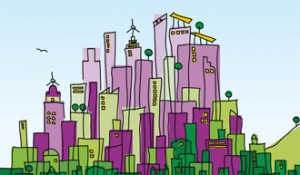Port au Prince has resilient qualities, but it can’t really be a ‘resilient city’
Can Port au Prince ever be a resilient city? I would argue that it already has resilient qualities, at least in the classic sense of the word, which is to withstand or recover quickly from difficult conditions.
But resilience also means recoiling or springing back into shape after bending, stretching, or being compressed. Port au Prince withstood the massive 2010 earthquake (though some might argue, what choice did it have?). But has it recoiled, sprung back into shape? Poko. Or not yet, as they say in kreyol. The Haitian capital is very much work in progress.
I’m not sure how much, or when, if ever, it can be a candidate for the ‘resilient city’ category. The term is generally now understood to indicate a ‘future-proofed’ city. In a ‘resilient city’, planners should’ve manifestly prepared for a “post-carbon, climate-responsible world”. The United Nations Office for Disaster Risk Reduction (UNODRR) talks about “making cities safe from disaster”.
Such as? “Making Paris resilient to floods,” is the most recent entry in the UNODRR’s ‘news’ section. (That’s particularly relevant this week, with the looming fear of bad weather and floods in many European cities.)
A resilient Port au Prince would mean solid earthquake-proofing, and a bit more. Earthquakes are not as frequent on the island of Hispaniola as in Japan, for instance. But, as I wrote in The Guardian recently, thanks to the World Bank, Haiti now has a building code and public buildings are being built to seismic specifications. (That’s not necessarily the case for private houses.)
But even this limited quake preparation will not, of itself, make Port au Prince a resilient city. It will not be “future-proofed”. How could it be any different? It is barely prepared for the present. So, there is little sign of the “transit supportive” policies recommended for ‘resilient cities’. There is little sign of the recommended planning, of energy and resource focus on conservationist conveniences. How could it be otherwise in the capital of the poorest country in the Americas? It’s struggling to feed itself. And house the teeming millions.
Perhaps resilient cities are a luxury for the developed world?



